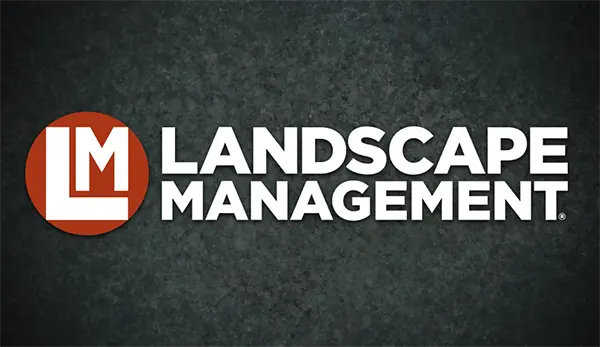Plant growth regulators can be useful tools for landscape contractors and lawn care operators, but experts say they aren’t prevalent in the industry.
Plant growth regulators (PGRs) can provide a number of benefits to landscape contractors and lawn care operators. PGRs have been proven to save contractors time and money by decreasing the frequency of mowings, reducing the need to prune shrubs and trees, and minimizing the effects of certain diseases and pest infestations. But experts say they’re underused, niche tools that haven’t found their place in an industry with increased chemical restrictions and skeptical consumers.
“From my view, the development pipeline regarding PGRs is virtually dry with minimal development effort being focused in this area, particularly for ornamental growth regulation,” says Rick Fletcher, technical services manager at Nufarm America in Morrisville, N.C. “It is this specialization and the extensive cost of development and registration that limit the introduction of new PGR products for the LCO and landscape ornamental markets, followed by the lack of adoption as a standard use practice in these markets.”
Plant growth regulators are chemical substances that are used to regulate the growth of plants. For contractors, PGRs can reduce the need to trim, mow and prune by slowing the growth of turf, trees and shrubs. For LCOs, regular use of PGRs can improve overall plant and turf health, resulting in the need for less water and pesticides.
While there have been few recent advancements in the PGR market, one development is PGR combination products designed to enhance turf management across a wider range of climates and turf species. Some formulators have looked at premixes of different PGRs and older active ingredients used in the agricultural market. Last year, Nufarm introduced the active ingredient prohexadione calcium with its PGR Anuew, which is in the early adoption phase in the golf market.
Recent research in the golf industry used growing degree-day modeling (a measure of heat accumulation used by horticulturists to predict plant development rates) to evaluate different PGR active ingredients and determine their in-plant activity periods for several turf species.
Fletcher says this information will be useful for turf managers who use PGRs to maintain a consistent response at the use site.
“Although PGRs offer great benefits for managing turf, it is often difficult for lawn care operators to convince their customers it is worth the additional cost,” says Dean Mosdell, Syngenta’s field technical manager for the western U.S. “So the market potential for PGRs, at least at this point, is considered much smaller.”
Lee Kral, lawn service manager for Mountain High Tree, Lawn & Landscape Co. in Lakewood, Colo., agrees there is a lack of new products, information and training available for PGRs, which makes it difficult to sell them to customers. In Colorado, which is considered an environmentally conscious state, he’s found many homeowners have a negative connotation toward additional chemicals like PGRs. Mountain High Tree, Lawn & Landscape Co. offers lawn care services to an 85-percent residential, 15-percent commercial clientele and tree and shrub care services to a 65-percent residential, 35-percent commercial clientele.
“More information and a public push from chemical companies would help expand the market,” Kral says. “But now there just isn’t that much interest and there are so many questions. I think there needs to be more public information available because people don’t understand PGRs, and there is some fear because of the chemical side of it.”
Tree use is the ticket
Kral says Mountain High Tree, Lawn & Landscape Co. used to offer PGRs for turf, but now primarily uses them on trees and shrubs. The company has had success using PGRs to fight fire blight on crab apple trees. Kral says PGRs also can help new trees become established and are useful to slow the growth of long lines of shrubs and hedges that would be time consuming to prune. He says PGR use on trees is “an easier sell” because there are more available data and tangible ways to show the benefits PGRs can have on trees. Kral says he can show customers before-and-after photos of trees that have been treated with PGRs, and he can quantify the savings of fewer trimmings and less pesticide usage.
“Trees are a bigger investment for most people—they don’t want to lose a tree that will be $1,500 to remove,” Kral says. “People see a tree and feel like they aren’t spraying the PGR on everything, unlike a lawn.”
Steve Geist, senior consulting arborist for Swingle Lawn, Tree & Landscape Care in Denver, Colo., says his company also uses PGRs on a limited basis.
The company primarily uses PGRs as soil drench applications to increase root growth and canopy development on trees with damaged roots. It does not use them on shrubs or turf. Geist says Swingle has started to work with PGRs to “mask” symptoms of fire blight and is looking in to using them to control other insects and diseases, where changes in plant cellular structure may reduce the severity. Swingle Lawn, Tree & Landscape Care services a 67-percent residential, 33-percent commercial clientele.
“We’ve used some PGRs in working with iron chlorosis; however, our results have been inconsistent,” he says. “In Colorado, we are primarily trying to get trees to grow, so plant growth regulation is not a big-ticket item.”
Geist says PGRs are easy and economical to use, and soil-applied drenches can be a good add-on service in the off-season. But they also can cause unintended injury to adjacent plants, such as perennials planted at the base of a tree. Proper applications require experienced technicians to closely follow the label instructions.
“I would encourage folks to start slow and get experience first,” Geist says. “As you build your knowledge, then increase your use of PGRs.”
Kral agrees that increased education is the first step toward promoting more mainstream use of PGRs. He believes it would help contractors and lawn care operators choose the best PGR for their businesses. When choosing a PGR, he says, it’s important for contractors to consider their region’s climate and weather conditions, growing seasons, the experience of their technicians and the necessary equipment. But regardless of advancements in products or education, Fletcher is doubtful PGRs will ever become a mainstream product in the landscape industry. He believes they will instead be reserved for specific, niche purposes.
“I do not believe the LCO market will ever adopt PGRs as a mainstream tool, particularly for turfgrass, which are typically multispecies stands requiring different rates of PGRs,” Fletcher says. “Rather, I believe site managers will save them for specialized applications where they benefit their
operations.”

